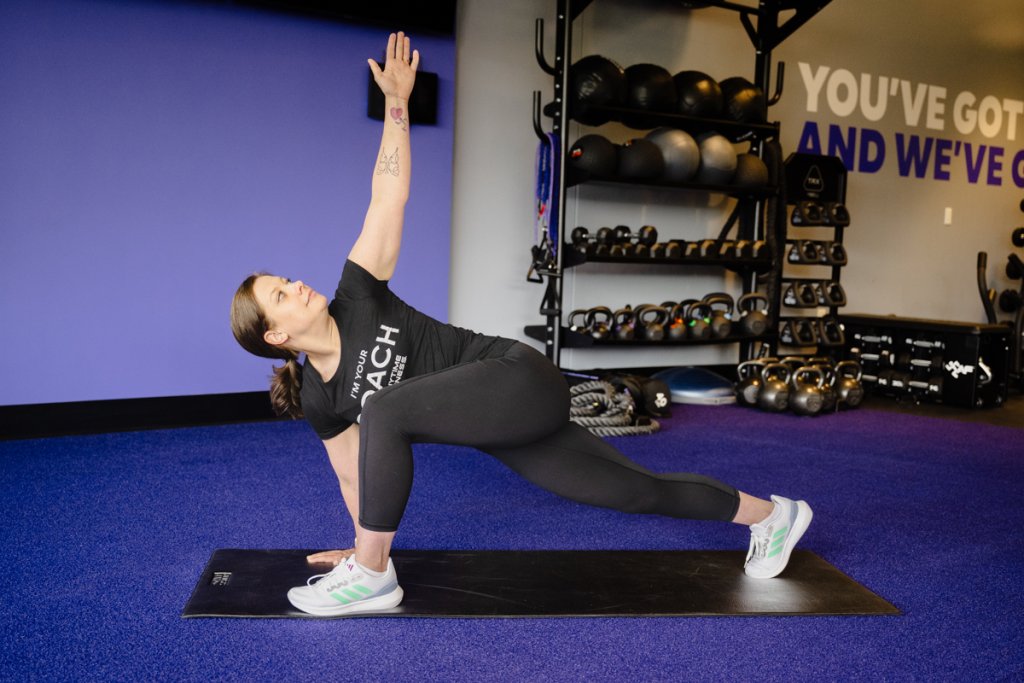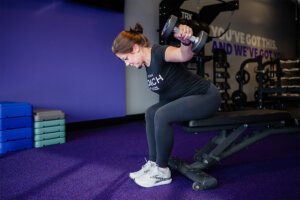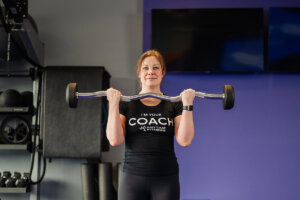Flexibility is often overlooked in exercise routines, but it’s a crucial element for overall fitness and well-being. If you’re someone who struggles with flexibility, don’t worry — you’re not alone! Fortunately, there are many simple and effective flexibility exercises that can help get those joints and muscles limber, regardless of your current ability.
Why flexibility is important
Flexibility plays a vital role in your overall health and fitness. It enhances your ability to perform everyday activities with ease and efficiency. When you’re flexible, your muscles can move through their full range of motion without restrictions, reducing your risk of injuries.
This is especially important for strength trainers. Lifting weights isn’t just about brute strength; it’s also about having a good range of motion. Having flexibility helps you maintain proper form and technique, which are essential for maximizing performance and preventing injuries. Flexibility exercises and stretches can help you lift more effectively and safely, ensuring you don’t end up with a pulled muscle.
How to increase flexibility
One way to help improve muscle and joint flexibility is to drink lots of water. Muscles are like sponges, and you can keep them hydrated for better pliability. You can improve the flexibility of your joints through resistance training. But perhaps one of the best ways to boost your body’s flexibility is through stretching exercises.
The benefits of stretching exercises
While stretching can play a huge role in flexibility training, the benefits of stretching go beyond that, including:
- Aids joints and muscles: As we mentioned, stretching helps you move your joints through their full range of motion. It also helps keep muscles from straining.
- Improved heart health: One study found that regular stretching can help improve heart health.
- Lowered blood pressure: 30 minutes of stretching five times a week can lower blood pressure just as well as walking for the same amount of time.
- Better circulation: Regular stretching keeps the blood flowing, reducing the risk of cramps.
- Enhanced performance: Whether you’re going for a run or lifting weights, stretching helps improve your performance.
- Improved mental health: The act of stretching can be incredibly relaxing, allowing you to focus on your breath and body and helping reduce stress and anxiety.
How often should you do stretching exercises?
The amount of stretching you should do depends on your individual needs and goals. However, you could start with 10 minutes of flexibility training at home each day and see how that feels. It’s important to listen to your body. If a stretch feels particularly good and you have the time, hold it for a bit longer. On the other hand, if you experience any pain or discomfort, ease off and try a different stretch. Remember, it’s not about how long you stretch, but how effectively you do it.
Most people start to see noticeable improvements in their flexibility within a couple weeks of regular stretching. We recommend setting short-term goals for yourself, such as being able to touch your toes or improve your posture. These small achievements can keep you motivated and encourage you to continue stretching regularly.
When is the best time of day to do flexibility stretches?
The best time to stretch depends on your personal schedule and preferences. You can stretch whenever, but there are some optimal times:
- Morning: This can help wake up your muscles. A morning routine could include dynamic stretches like arm circles, leg swings, and hip circles. These movements help increase blood flow and prepare your body for the day’s activities.
- Before bed: Stretching is a good way to relax the body and get it ready for sleep. An evening stretch routine can be more focused on relaxation. Incorporate gentle, static stretches that you can hold for longer periods to help relax your muscles and mind. These could include child’s pose, seated forward bend, and legs-up-the-wall.
- Pre-workout: Use dynamic stretching to warm up your muscles. By rotating your joints and swinging your arms and legs, you’re increasing blood flow and loosening connective tissues — literally warming them up for your workout.
- Post-workout: Static stretching aids in workout recovery by helping the body wind down and relaxing the muscles.
What is the best stretching exercise for flexibility training?
While the best stretch for you will depend on your goals and your most urgent needs related to flexibility and mobility, there is one exercise called “The World’s Greatest Stretch” — also known as the Spiderman Hold with Rotation. We’ll show you how to do it below.
6 Stretching Exercises to Boost Flexibility
This flexibility stretch routine starts with static stretches and mobility drills, moves into dynamic stretches, and wraps with “The World Greatest Stretch.” So grab your exercise mat and let’s get flexible!
1. Lying Figure Four Stretch
Good for stretching: Hip stabilizers, hip joint
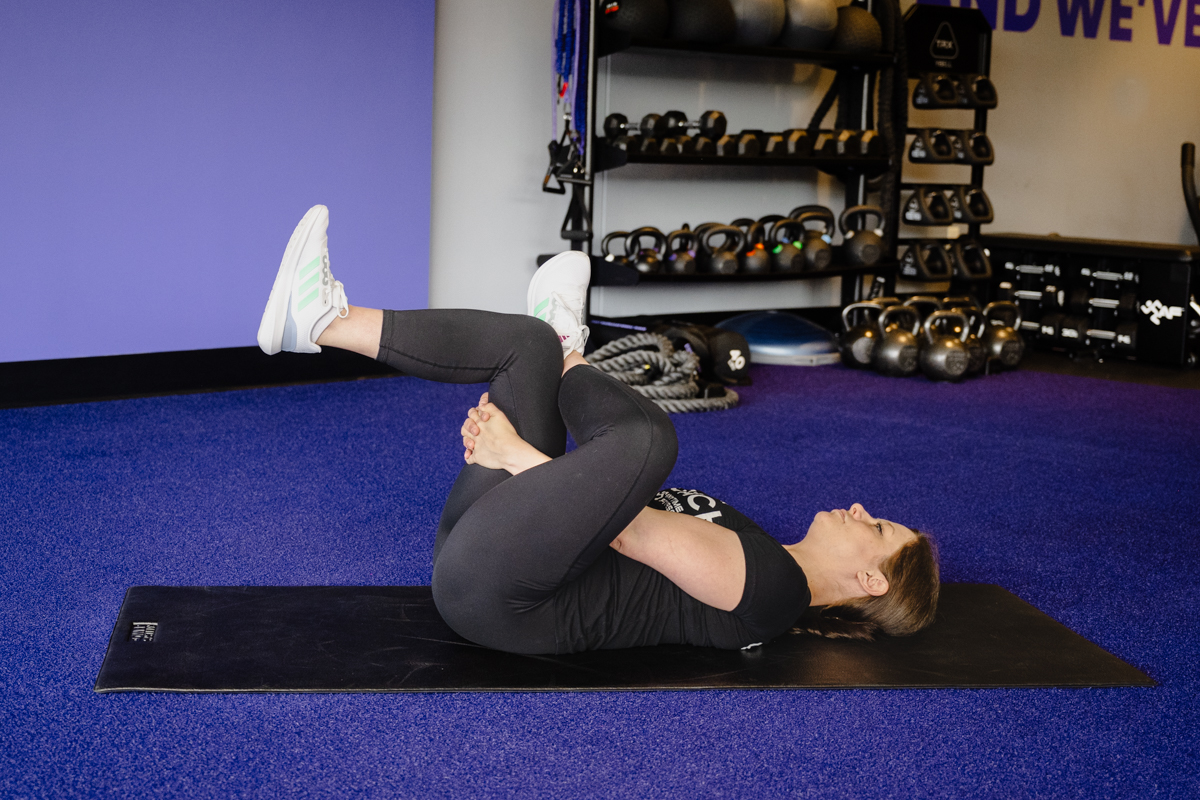
How to do this static stretch:
- Lay on your back and cross one leg over the opposite knee.
- Grab the opposite leg and pull it up to 90 degrees.
- Hold for 30 seconds and perform 1–3 sets.
2. 90/90 Stretch
Good for stretching: Hip flexors
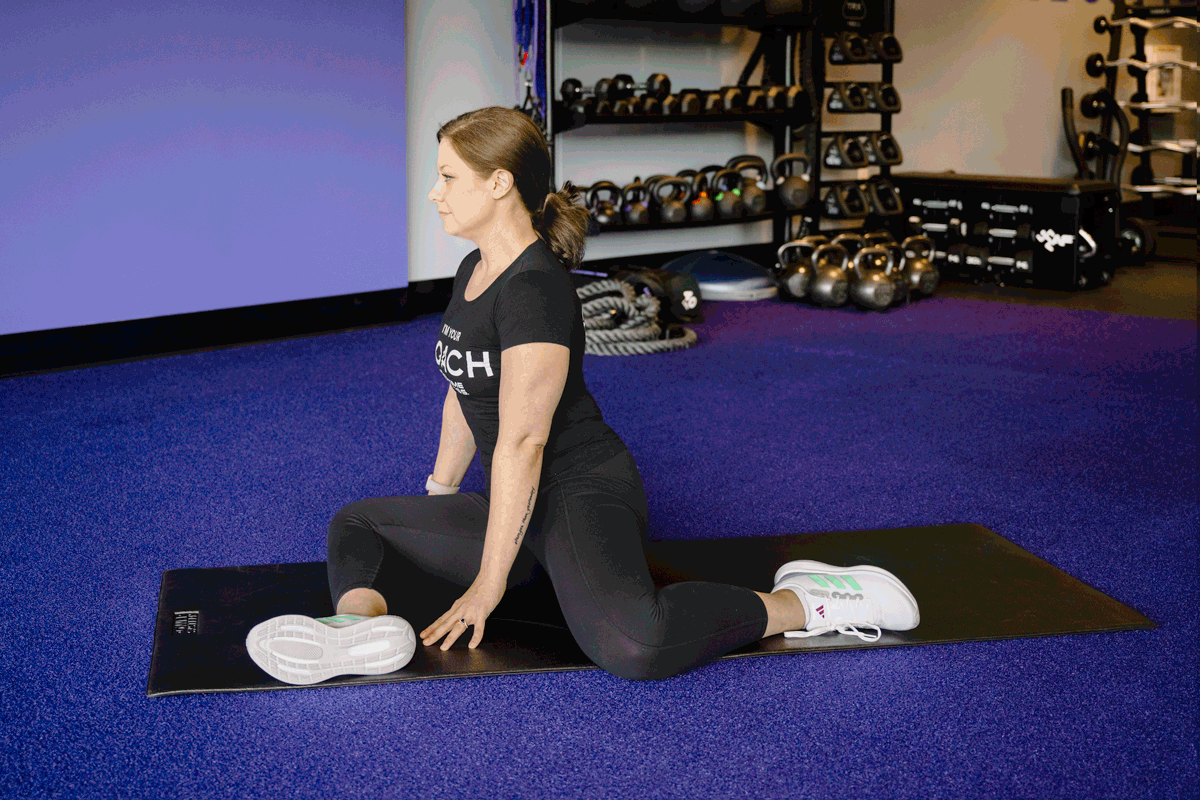
How to do this static stretch:
- Begin in a seated position with one leg internally rotated and your other leg externally rotated, both with a 90-degree bend at the knee.
- Breathe as you hold this position for 30 seconds before switching sides. Perform 1–3 sets.
3. Hip Mobility Straddle
Good for stretching: Hip joint, hamstrings
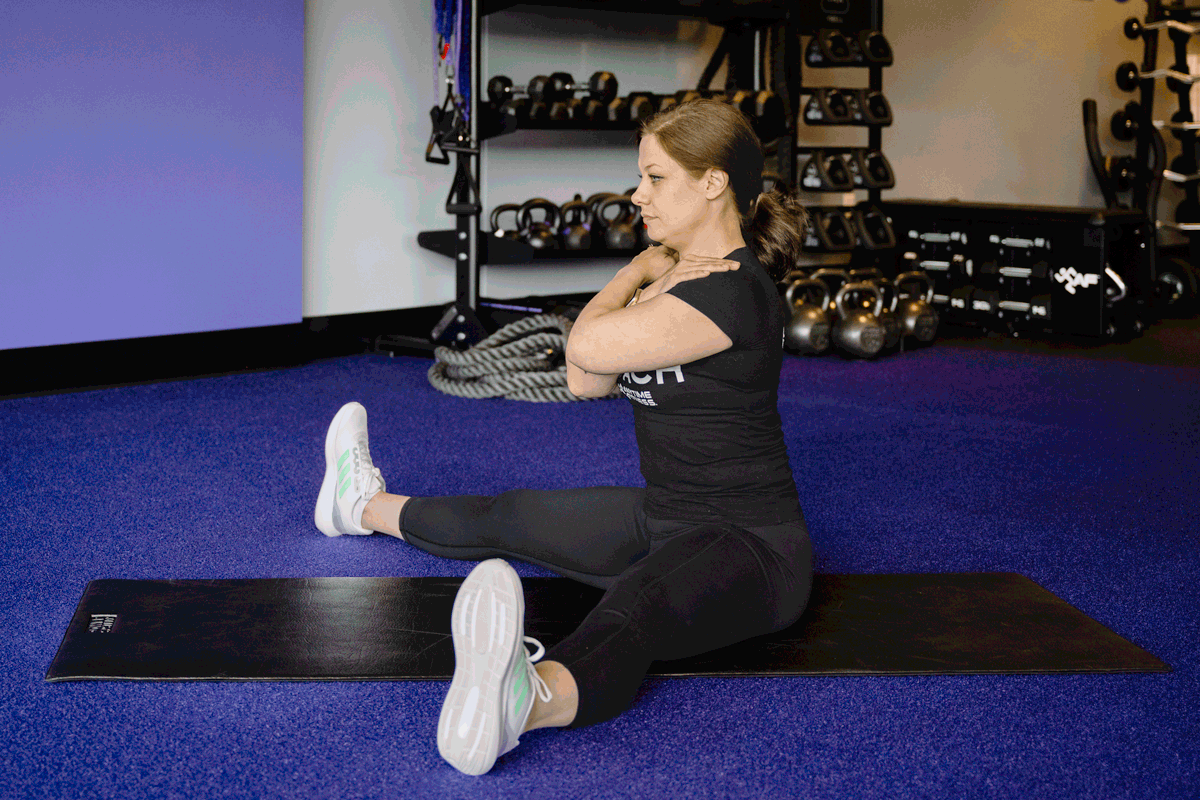
How to do this mobility exercise:
- Begin seated with your legs spread wide in front of you, toes pointed up.
- Cross your arms across your chest.
- While maintaining a tall spine, hinge and circle your torso from the hips.
- Alternate directions and repeat for 30 seconds. Perform 1–3 sets.
4. Squat Mobility Drill
Good for stretching: Hip joint, hamstrings
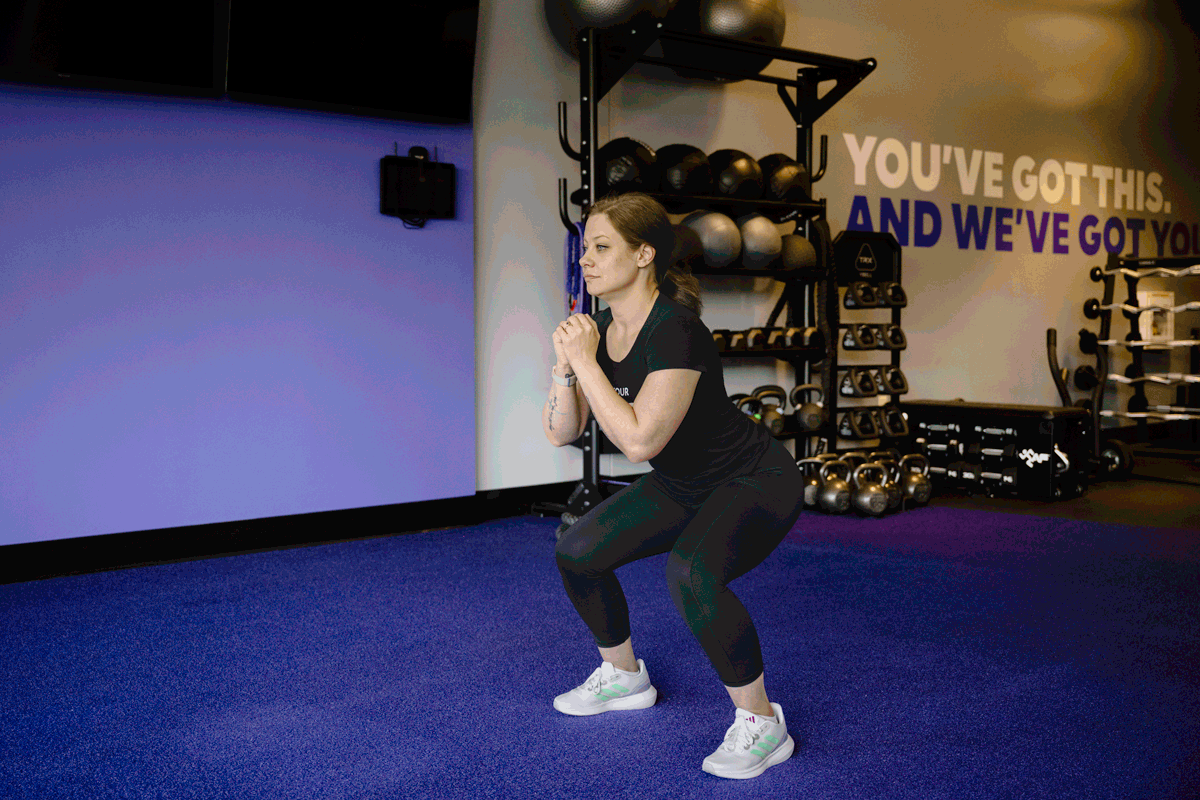
How to do this mobility exercise:
- Stand up tall and step your feet out wide with your toes slightly pointed out.
- Sit back and down into a squat position.
- Return to a stand.
- Repeat 5 times or for 30 seconds. Perform 1–3 sets.
5. Hand Walk Press-Up (Inchworm to Upward Facing Dog)
Good for stretching: Lumbar spine, shoulders
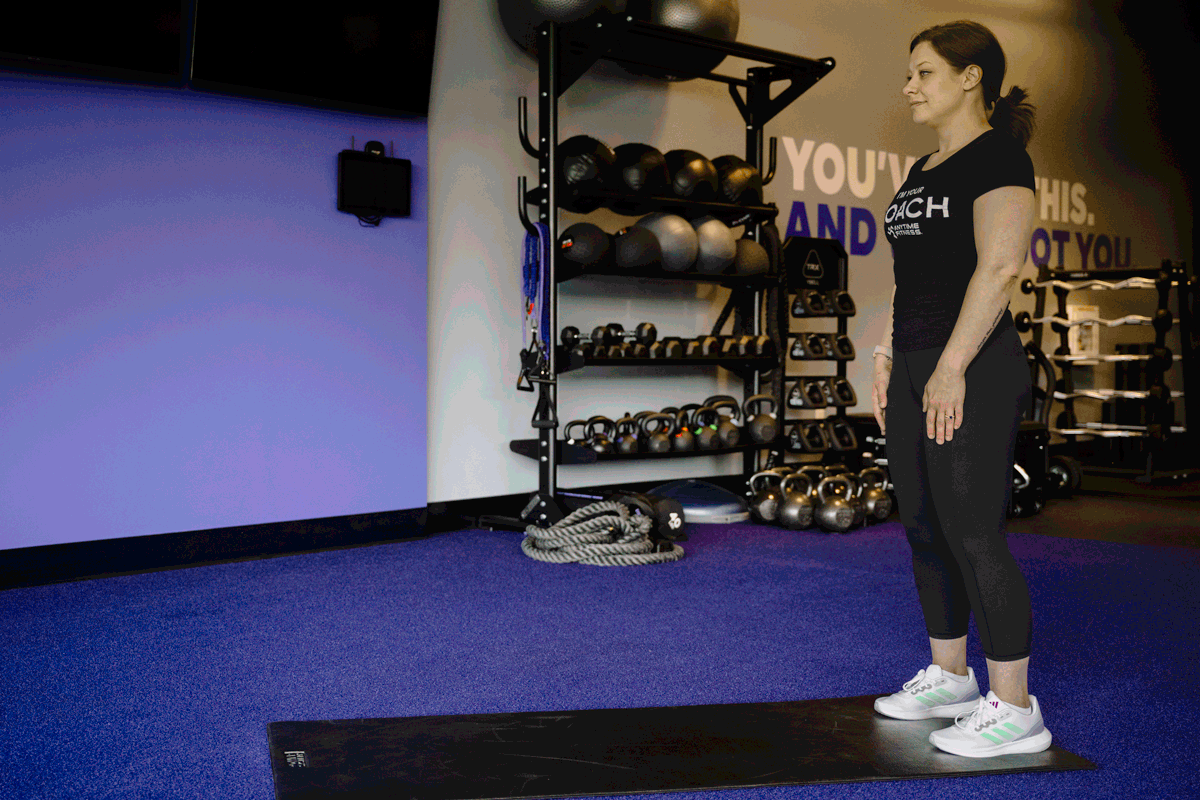
How to this dynamic stretch:
- Start upright in a standing position.
- While keeping your legs straight, bend over and walk your hands out into a high plank position.
- Pause, and let your hips drop down toward the floor. Keep your arms straight and shoulders back
- Lift the hips back up and walk your hands back toward your feet.
- Repeat 5 times or for 30 seconds. Perform 1–3 sets.
And finally, “The World’s Greatest Stretch”
Why we love this flexibility stretch: The dynamic movement helps improve flexibility and mobility throughout your shoulders, spine, and hips while engaging the muscles of the core, back, and legs. If you’re looking for an easy way to implement daily stretching, start with this one. You can also add it to your post-workout cooldown stretching regimen.
6. Spiderman Hold with Rotation
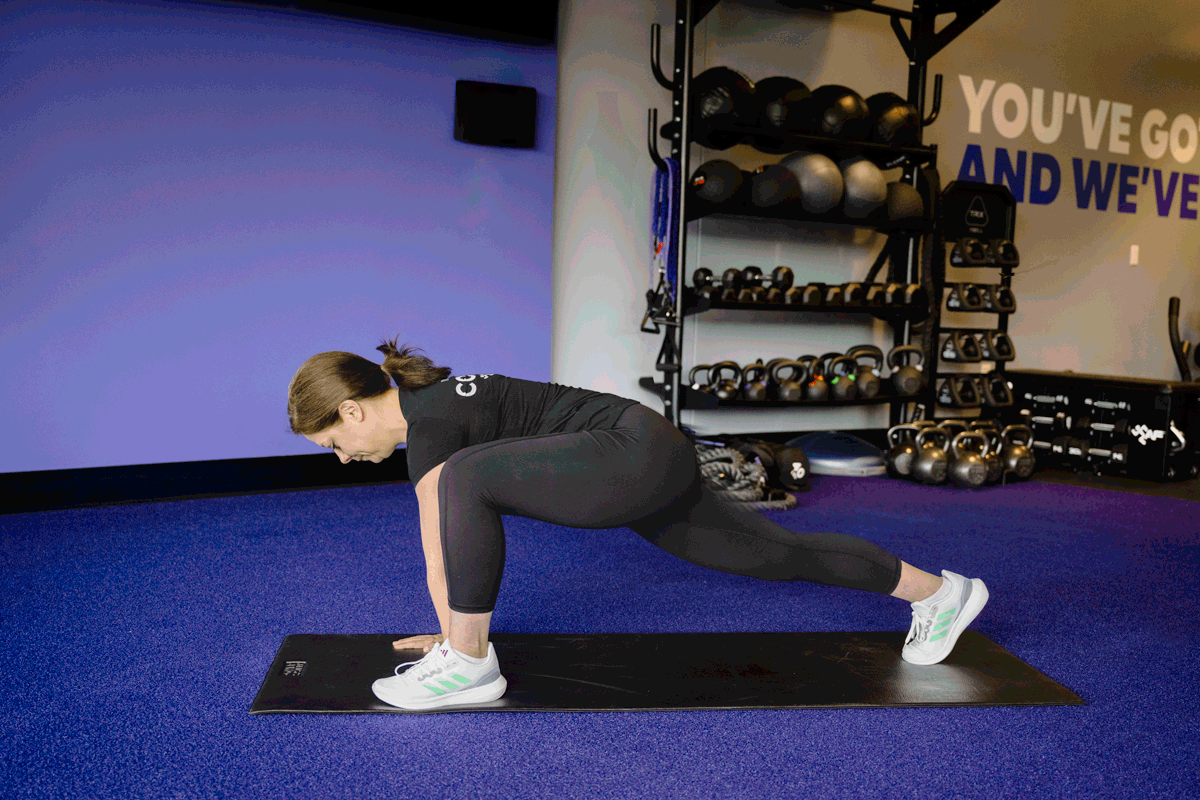
How to do this dynamic stretch:
- Start in a high plank position.
- Step one foot up outside of and next to the same side hand.
- Rotate open with that hand and reach for the ceiling.
- Next, reach your elbow toward the floor.
- Repeat. Perform 8–12 reps per side.
A final word on flexibility exercises
Flexibility isn’t just about being able to touch your toes or do a split (although, kudos to those who can!). It’s about improving your overall well-being and ability to move — whether that’s in the gym or throughout everyday life. Doing stretching exercises at home or working them into your workout routine can help you prevent injuries, reduce muscle soreness, and even improve your posture.
